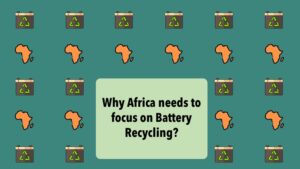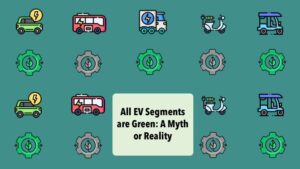India stands strong in achieving universal access to electricity with almost 100% electrification by 2019. The national grid has played a very important role in improving this access, but its reliability continues to pose a challenge, and more so in semi-urban, rural and remote areas. Distributed Renewable Energy (DRE) in the form of solar roof tops (SRT) and solar home systems (SHS) tied with efficient appliances help improve reliability of service and are seeing increased adoption. By some estimates, there are approximately 4 million HHs (1.4% of the total 277 million HHs in India) with some form of SRTs or SHSs in India.
Many of the previously used SHSs were standalone systems powering AC and/or DC Appliances with energy storage. Today, there is a new class of DRE solutions commonly termed Hybrid Solar Systems, which integrates solar with AC grid power (uni or bi-directional) and can power AC and/or DC appliances. Such new Hybrid AC-DC (HAD) power solutions can help users to take advantage of solar power – improving supply hours and reducing their Power Distribution Company (Discom) energy bills. India saw estimated annual sales of some 0.8 million units of solar hybrid inverters or uninterruptible power supply (UPS) systems in 2019 (compared to some 8 million-unit sales of conventional inverters) and there is an expected increasing trend.
More and more power systems and appliances OEMs and System Integrators are joining this fast-growing HAD market in India. There is a new class of efficient appliances (including lights, bulbs, fans, TVs, refrigerators, washing machines, pumps, etc.) that use fundamental DC-run LED or BLDC motors, and can be run on AC supply and/or DC supply. Some further innovations in appliances include embedding energy storage inside the appliance to avoid the need for costly centralized power back-up solutions. These innovations on the appliances side will further push for increased need of enabling HAD infrastructure for the synergistic co-existence of AC and DC.
In this regard GOGLA initiated a whitepaper which evaluated the opportunities for HAD infrastructure in India. The paper evaluates potential customer segments expected to drive the demand for HAD solutions. The demand assessment identified HHs with no power back-up solution, potential HHs with grid-connected solar rooftops, existing conventional inverter customers, existing mini/micro grid customers and existing SHS users as the potential customer segments to transition hybrid solar systems.This paper also suggests three key strategies to enable these customer segments HHs to shift to HAD power solutions as below:
- Strategy-1: Upgrading existing power back-up solutions
- Strategy-2: Adding new HH that do not have any power back-up solution
- Strategy-3: Replacement at end of product life
To further strengthen the HAD infrastructure in India, below key recommendations were made to the OEMs, Government and Industry Associations. The findings of the study were shared through an online webinar along with industry experts.

During the launch event, Padmashri Prof. Ashok Jhunjhunwala stated small (<1kW) and large (>3kW) size of HAD power solutionwhich can also feed solar power back to grid can be designed at low-cost and scaled-up. It has immense potential to cover every home in India. He also emphasized that there is a need for remote monitoring, data analytics and controls to designsuch HAD system which will ensure there is no wastage of solar power, minimum usage of AC grid power and at the same time have sufficient power back-up.
Shiva Srivastava, Marketing Leader Asia from Greenlight Planet converged on the thoughtthat HAD is a very promising technology and futuristic as lot of homes are getting connected to grid and already using SHS. Venkat Rajaraman, Chairperson GOGLA India Working Group highlighted the strong need of hybrid AC-DC infrastructure as there is proliferation of EE DC appliances and grid extension. He also mentioned that he views HAD technology for residential sector would fit well and also be a big opportunity area for HAD power solutions.
Rajesh Kunnath, Radiostudio and Convener IEEE LVDC Standards said there are many gaps in standards and there has to be reports like this which act as a backbone to understand HAD architecture and credible market opportunity that is scalable. This will energize the standards body and pave way for manufacturers to participate in standardization to improve reliability. Adding to this Makena Ireri, Manager from CLASP highlighted that it will be important to facilitate R&D and pilot demonstrations as they help bringing more market players and bringing down the technology costs.
Acknowledging the study, Koen Peters, Executive Director, GOGLA mentioned that the research has come very timely as there are developments in industry with EE DC appliances and hybrid solar systems. He also stated that standardization may be a driver to innovation, and it would be wise for the industry to come up with the ideas as to what needs to be standardized and in what ways, before bringing it to BIS or IEEE to have a better direction to promote innovations.
It was concluded by Rahul Bagdia, Managing Director, pManifold that evidently the market is heading towards hybridization, i.e. integration of AC-DC power supply and appliances that support these systems. However, challenges like high upfront equipment cost, high sales effort, low customer awareness, and lack of standardization are an acknowledged reality. Yet, these factors should not deter off-grid players from diversifying and offering HAD solutions to customers. The key industry stakeholders like OEMs, Government and Industry Associations will play a vital role towards mitigating these challenges and enabling growth of HAD infrastructure in India.



